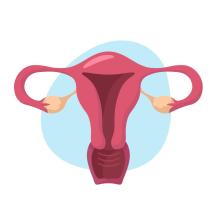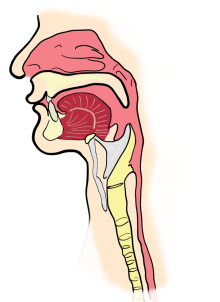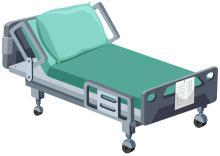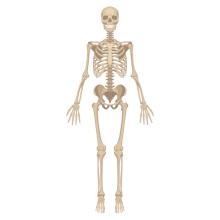Recent Publications

Shemy Carasso, Offer Amir: Clinical Predictors of Mortality in Prehospital Distress Calls by Emergency Medical Service Subscribers (J Clin Med .)
Most studies rely on in-hospital data to predict cardiovascular risk and do not include prehospital information that is substantially important for early decision making. The aim of the study was to define clinical parameters in the prehospital setting, which may affect clinical outcomes

Danna Krupik: Willingness to Accept Expedited COVID-19 Vaccine Research for Children Aged <12 Years After Adult Vaccine Approval (Clin Ther . )
The goal of this study was to assess if caregivers' attitudes toward the regulatory process of approving the vaccine against coronavirus disease 2019 (COVID-19) for children aged <12 years changed after a vaccine was approved for adults.

Sondra Turjeman, Oren Ziv, Omry Koren: Preterm infant meconium microbiota transplant induces growth failure, inflammatory activation, and metabolic disturbances in germ-free mice (Cell Rep Med . )
Preterm birth may result in adverse health outcomes. Very preterm infants typically exhibit postnatal growth restriction, metabolic disturbances, and exaggerated inflammatory responses. We investigated the differences in the meconium microbiota composition between very preterm (<32 weeks), moderately preterm (32-37 weeks), and term (>37 weeks) human neonates by 16S rRNA gene sequencing.

Shemy Carasso, Edo Y Birati, Offer Amir: The relationship between the body mass index and in-hospital mortality in patients admitted for sudden cardiac death in the United States (Clin Cardiol . )
While obesity has been shown to be associated with elevated risk for Sudden Cardiac Death (SCD), studies examining its effect on outcomes in SCD victims have shown conflicting results. We aimed to describe the body mass index (BMI) distribution in a nationwide cohort of patients admitted for an out of hospital SCD (OHSCD), and the relationship between BMI and in-hospital mortality.

Moaad Farraj, Zakhar Bramnick, Boris Kruchin, Uri Gedalia, Ron Dar, Hisham Hussein, Anton Kvasha, Igor Waksman: Expectant management in delayed presentation of war casualties with penetrating abdominal trauma (Injury. )
While the management of acute civilian abdominal injuries is well established, The literature regarding the management of battle-related abdominal injuries presented in a delayed fashion is scarce. The objective of this study was to investigate the safety of non-operative management approach in delayed evacuation of battle-related abdominal injuries.

Maya Levhar, Anat Schonblum, Keren Agay-Shay: Residential greenness and hair cortisol levels during the first trimester of pregnancy (Environ Res .)
Studies have shown that increased maternal cortisol level is associated with child adverse health outcomes. Hair cortisol (HC) is suitable for assessing long-term circulating cortisol concentration. Only two previous studies reported beneficial associations between cortisol and residential greenness during pregnancy and no study focused on the first trimester. Our aim was to evaluate the association between residential greenness and first trimester HC levels among pregnant women in Israel.

Chaim Putterman: CXCL13 Neutralization Attenuates Neuropsychiatric Manifestations in Lupus-Prone Mice Front (Immunol. )
Neuropsychiatric lupus (NPSLE), the nervous system presentation of systemic lupus erythematosus (SLE), remains challenging to treat due to its unclear pathogenesis and lack of available targeted therapies. A potential contributor to disease progression is brain tertiary lymphoid structures (TLS); these ectopic lymphoid follicles that can develop tissue-targeted antibodies have recently been described in the MRL/lpr lupus mouse strain, a classic model for studying NPSLE. The brains of MRL/lpr mice show a significant increase of CXCL13, an important chemokine in lymphoid follicle formation and retention that may also play a role in the disease progression of NPSLE. The aim of the present study was to inhibit CXCL13 and examine the effect of this intervention on lymphoid formation and the development of neurobehavioral manifestations in lupus mice.

Inbar Ben Shachar, Ilan Atlas: Minimally invasive approach in endometrial cancer with lower uterine segment involvement in stage ≥ II: A retrospective study (Eur J Obstet Gynecol Reprod Biol .)
Compares oncological outcomes in women with lower uterine segment involvement (LUSI) in endometrial carcinoma (EC) stage ≥ II - staged by a minimally invasive surgery (MIS) versus laparotomy.

Elon Glassberg, Avi Benov: High Success Rate of Prehospital and En Route Cricothyroidotomy Performed in the Israel Defense Forces: 20 Years of Experience (Prehosp Disaster Med . )
Securing the airway is a crucial stage of trauma care. Cricothyroidotomy (CRIC) is often addressed as a salvage procedure in complicated cases or following a failed endotracheal intubation (ETI). Nevertheless, it is a very important skill in prehospital settings, such as on the battlefield. This study aimed to review the Israel Defense Forces (IDF) experience with CRIC over the past two decades.

Maamoun Basheer, Elias Saad, Dorin Shlezinger, Nimer Assy: Convalescent Plasma Reduces Mortality and Decreases Hospitalization Stay in Patients with Moderate COVID-19 Pneumonia (Metabolites .)
Humans infected with SARS-CoV-2 may develop COVID-19, which manifests across a wide spectrum of clinical severity ranging from mild upper respiratory tract illnesses to diffuse viral pneumonia, causing acute respiratory failure. Many therapies have been tested for their efficacy in treating COVID-19. Controversy surrounds convalescent plasma transfusions as an effective treatment for COVID-19. This study discusses the efficacy of this treatment on COVID-19 patients.

Ayelet Armon-Omer, Eti Amir, Saleh Khateeb, Itai Mizrachi, Monia Shalan, Uri Yatzkar: Unique Trans-fatty Acid Profile in Children With Attention Deficit Hyperactivity Disorder (Front Psychiatry .)
Attention deficit hyperactivity disorder (ADHD) is the most common developmental disorder in children. Studies suggest an association between fatty acids composition and ADHD pathogenesis. We aimed to investigate whether children diagnosed with ADHD present unique fatty acid profiles in red blood cells (RBC), as compared to children without ADHD

Meir Shamay: Latently KSHV-Infected Cells Promote Further Establishment of Latency upon Superinfection with KSHV (Int J Mol Sci . )
Kaposi's sarcoma-associated herpesvirus (KSHV) is a cancer-related virus which engages in two forms of infection: latent and lytic. Latent infection allows the virus to establish long-term persistent infection, whereas the lytic cycle is needed for the maintenance of the viral reservoir and for virus spread. By using recombinant KSHV viruses encoding mNeonGreen and mCherry fluorescent proteins, we show that various cell types that are latently-infected with KSHV can be superinfected, and that the new incoming viruses establish latent infection.

Manny Menachem Arieli, Ziv Paz: The Profile of the Causative Organisms which Lead to Septic Arthritis of Native Joints Over the Last Two Decades in a Single Tertiary Medical Center in the East Coast of the United States (Int J Clin Pract . )
Septic arthritis (SA) is associated with significant morbidity and mortality. Delayed or inadequate treatment may result in joint destruction, osteomyelitis and sepsis. Like other types of infection, the causative agents of SA may have changed over time. Early targeted intervention is important in cases of SA and can be achieved only understanding the current trends in the microbiology of SA.

Edo Y Birati: Impact of Age on Emergency Resource Utilization and Outcomes in Pediatric and Young Adult Patients Supported with a Ventricular Assist Device (ASAIO J .)
There are minimal data describing outcomes in ambulatory pediatric and young adult ventricular assist device (VAD)-supported patient populations. We performed a retrospective analysis of encounter-level data from 2006 to 2017 Nationwide Emergency Department Sample (NEDS) to compare emergency department (ED) resource utilization and outcomes for pediatric (≤18 years, n = 494) to young adult (19-29 years, n = 2,074) VAD-supported patient encounters.




